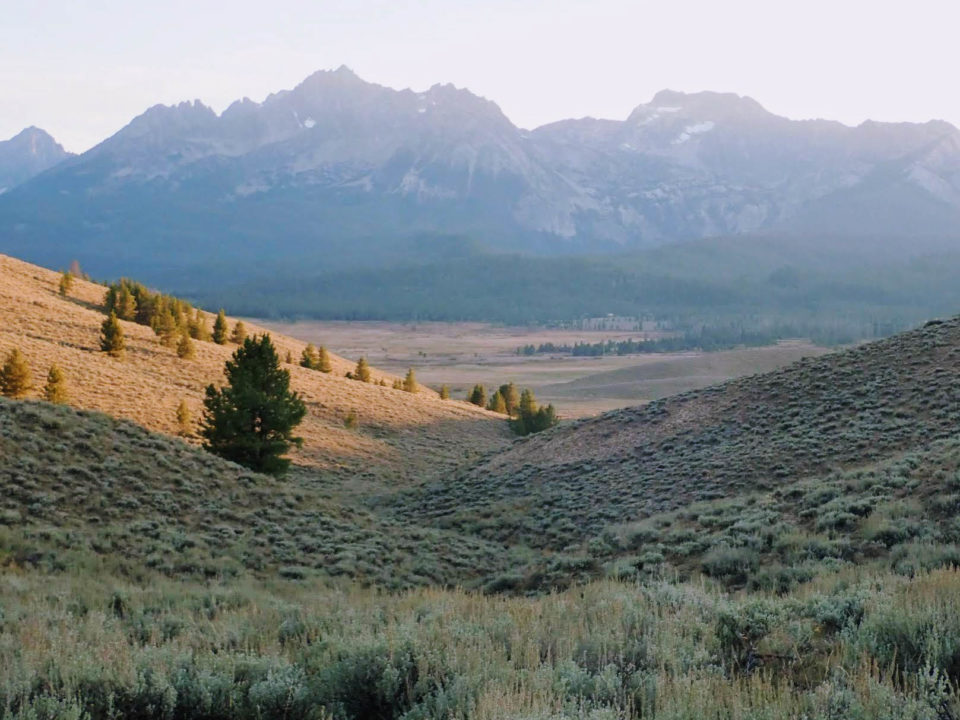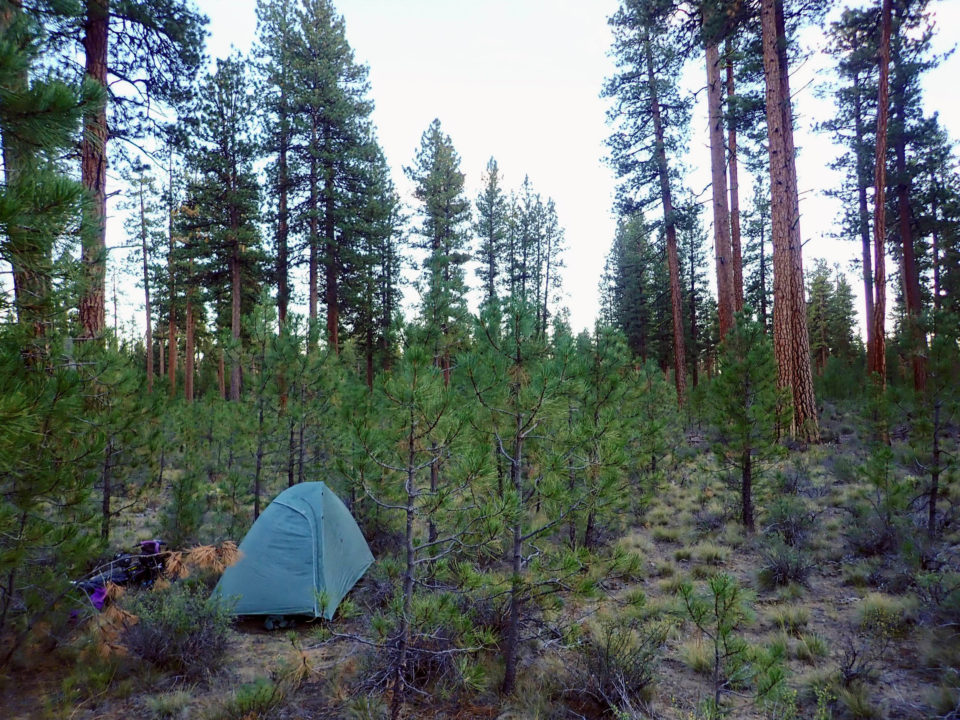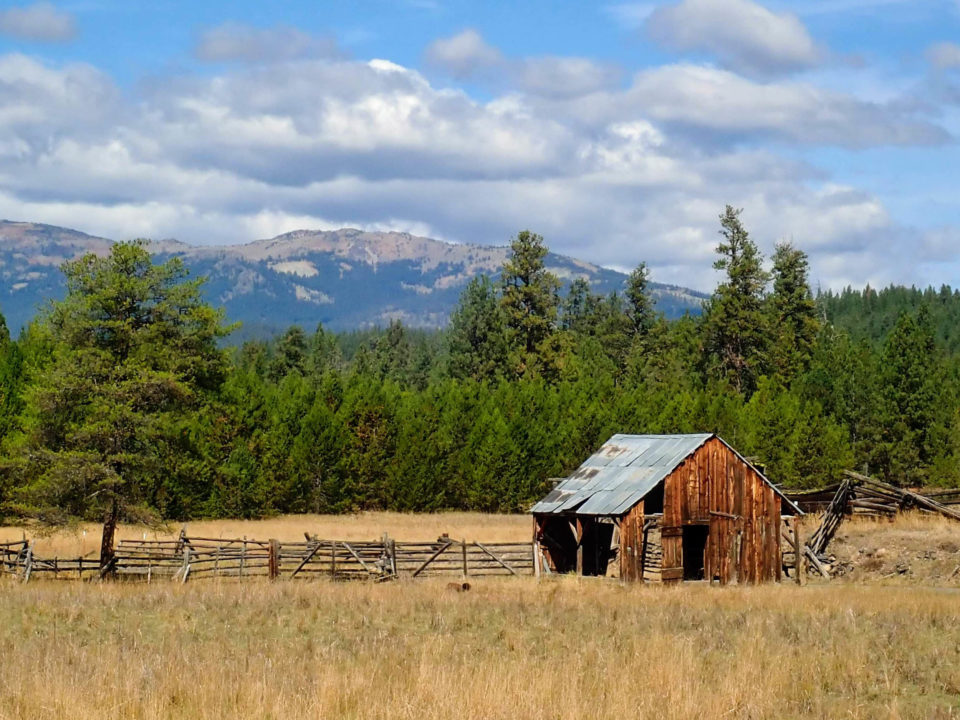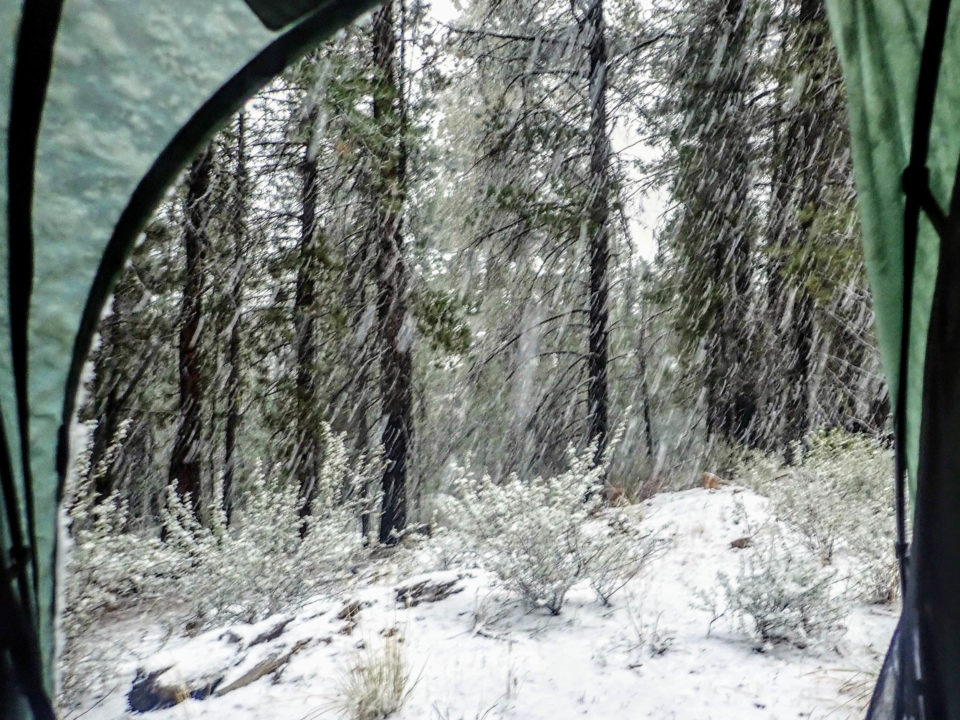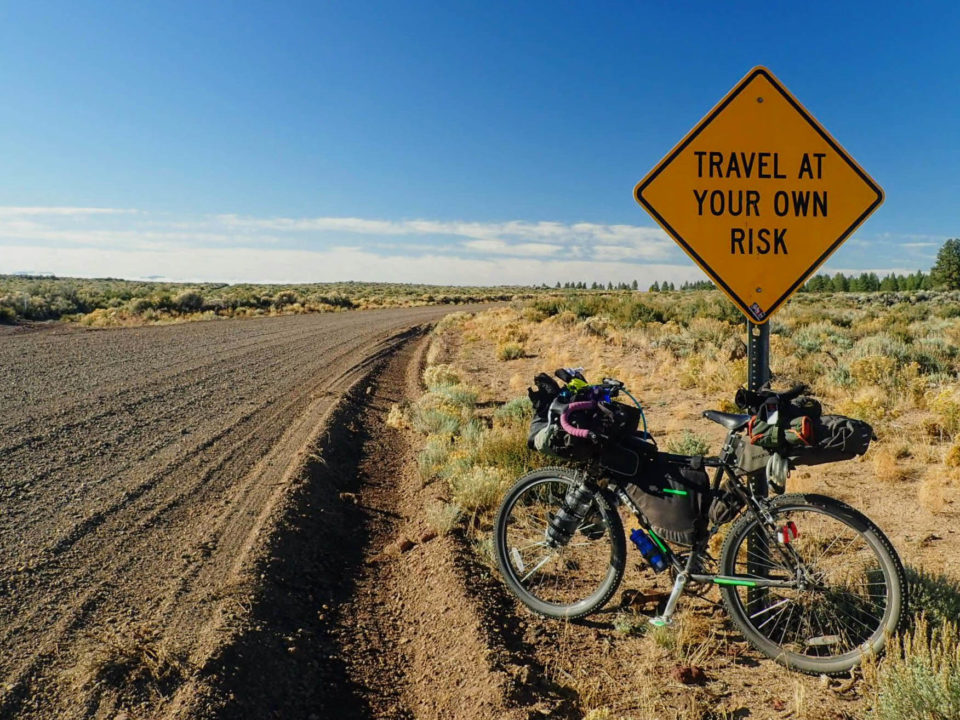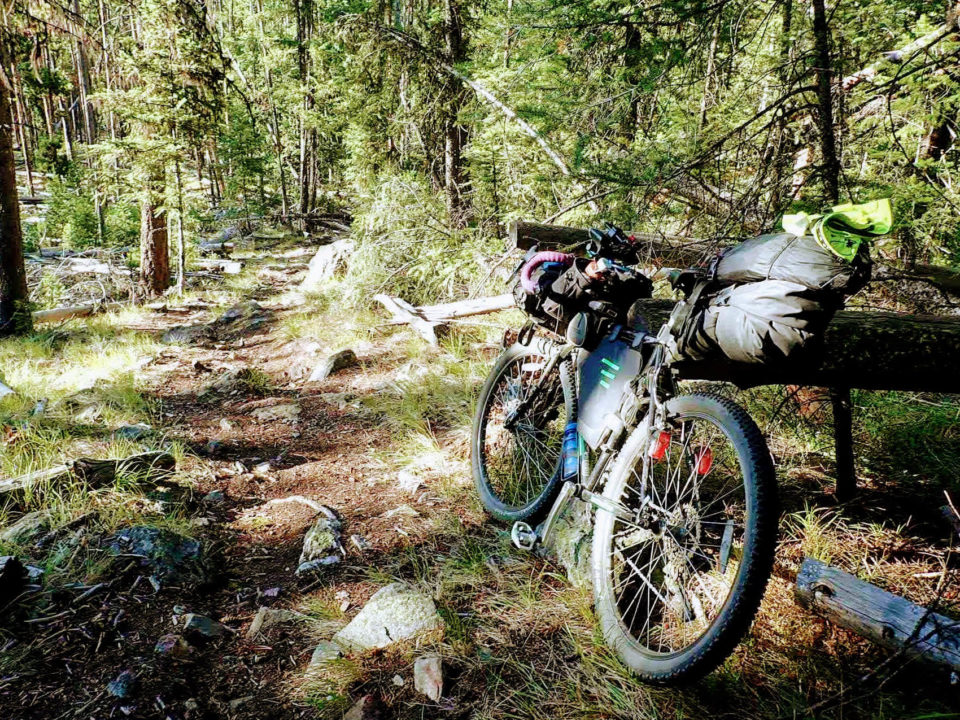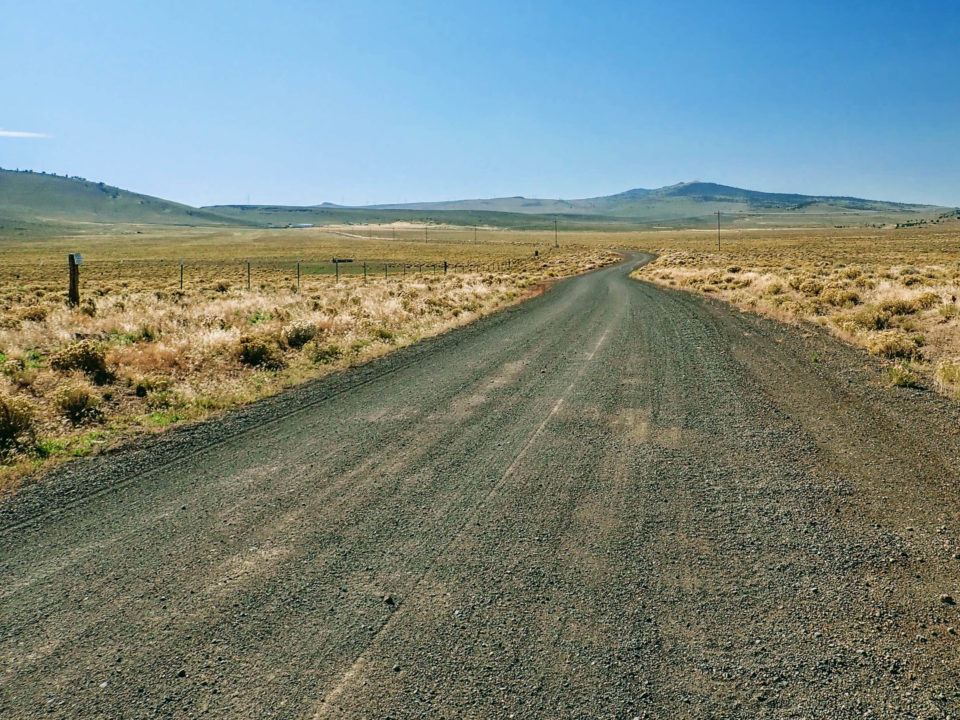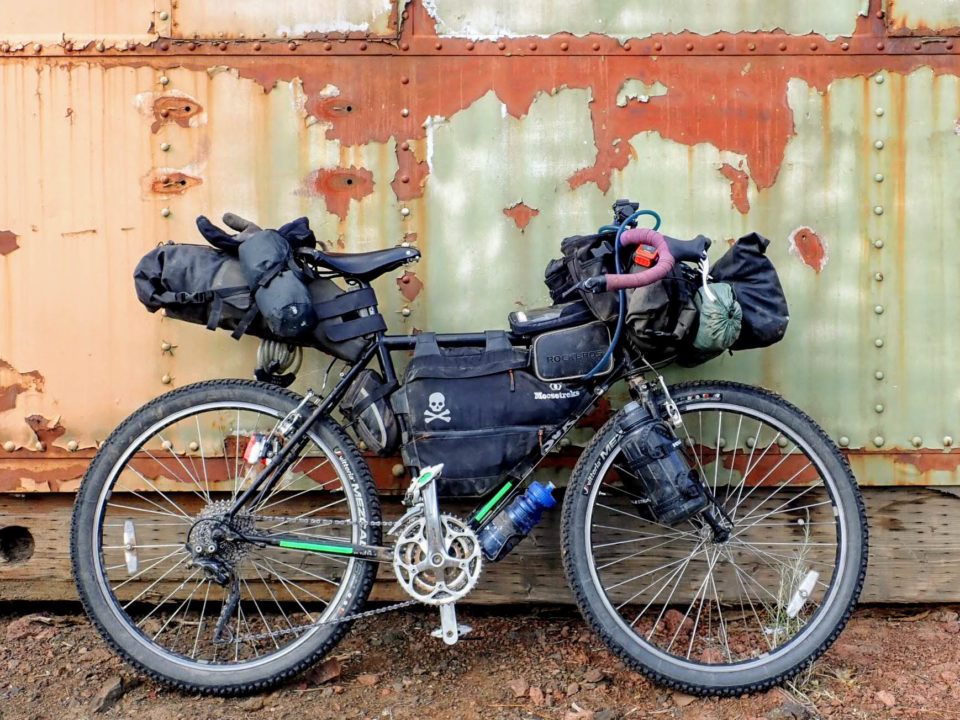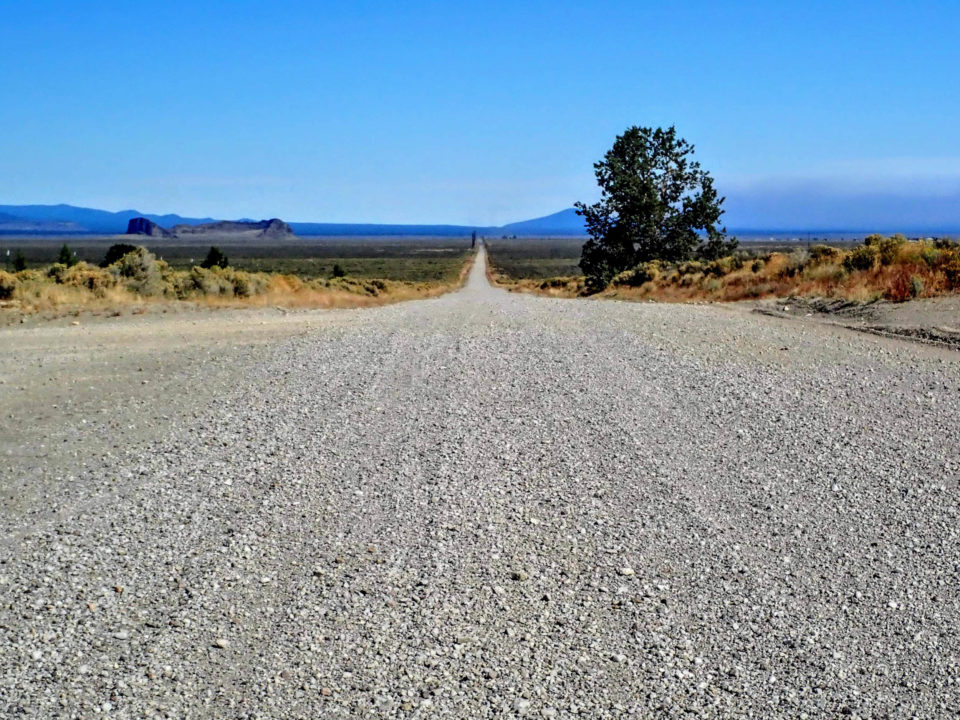Beginning Again: First Impressions of Bikepacking
Share This
Seeking a quieter alternative to the busy roads she encountered on previous bike tours, Alissa Bell took to the byways of Idaho and Oregon for her first bikepacking trip. In this piece, she shares her first impressions and lessons learned as a new bikepacker…
The canyon twisted in blissfully endless descent. Every time I thought it was over, the bottom dropped out yet again. Finally, at the shore of the John Day River, the downhill and the pavement both came to an end.
I had been waiting for this since pedaling westward out of Boise a week prior, a bicycle traveler on a mission to ditch the panniers and pavement and try this bikepacking thing. Central Oregon’s martian landscape and empty gravel roads beckoned. I paused to scarf a protein bar and tightened the ever-loosening straps on my cheap new seat bag, ready to ride off into the wilderness.
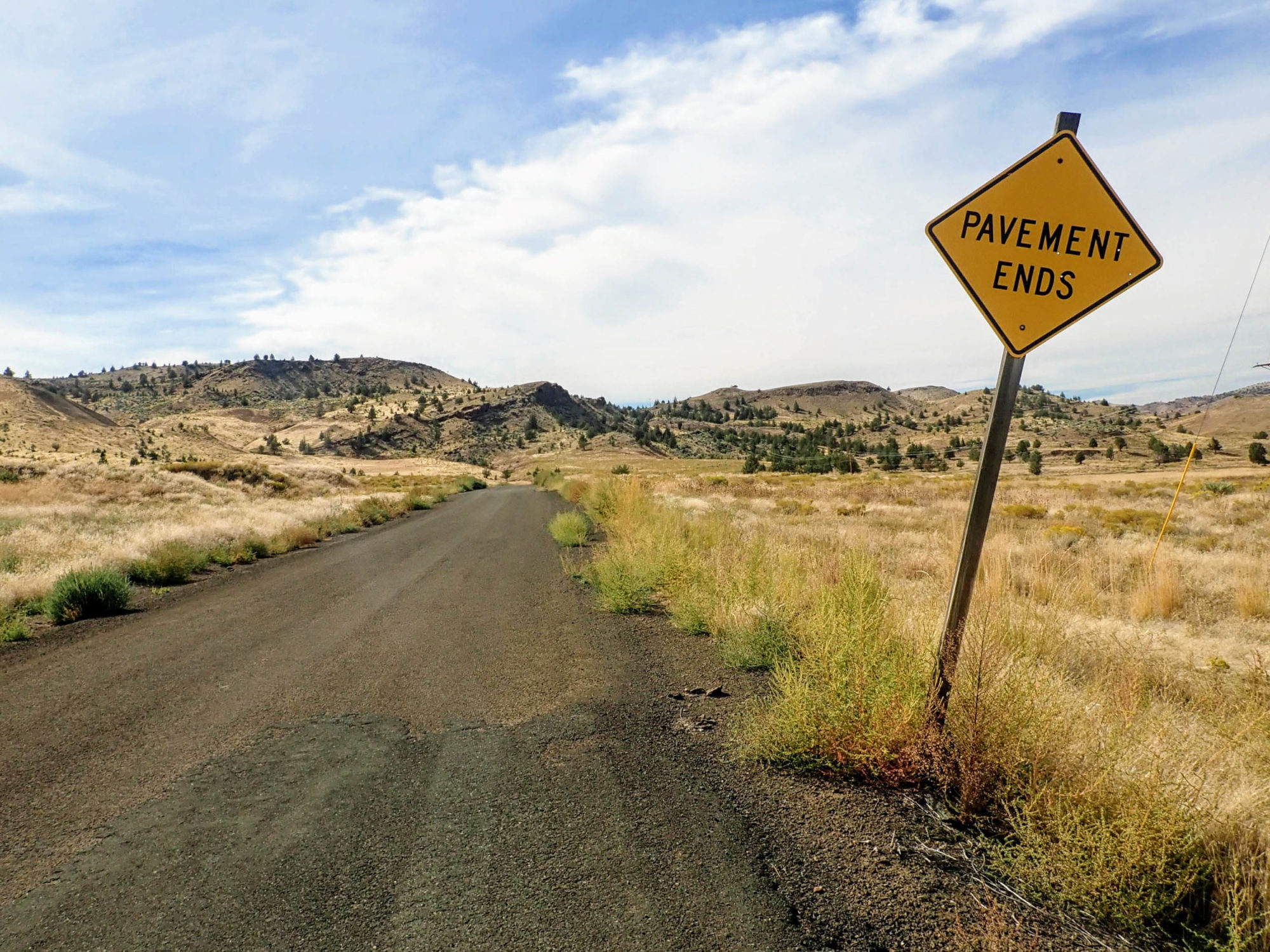
I’m actually no beginner when it comes to bicycle travel. With thousands of miles under my wheels in the US and overseas—and usually solo—I know what it feels like to live on my bike for weeks or months on end. But those trips couldn’t be called bikepacking; too much pavement, too many panniers, usually both.
Since surviving a few thousand miles of road riding across the US, I’d felt pulled away from busy pavement. I craved a return to the peace of trails and dirt from where I’d first started cycling, a trail runner and backpacker with a budding bicycle travel problem. I’m not usually one to fixate on labels, but the term “bikepacking” seemed to describe the new adventure I was looking for: rugged, peaceful, efficient. I needed to try it.
So I set out on a messy, boundary-blurring ride, an intentional experiment with all the makings of a turning point. I outfitted my beloved (but comically inappropriate) Long Haul Trucker with the widest tires that would fit and the cheapest bags I could find. I flew to Idaho for the Smoke ‘n’ Fire 400, where I had a blast and also learned why people don’t typically bikepack on rigs built for touring on pavement. It was worth a try.
Then, because I like long lines on maps and am fortunate to have the time, I started pedaling westward out of Boise. Quiet highways led to quieter back roads that intersected with my final objective, the Oregon Outback route, heading south to Klamath Falls and the Amtrak that would take me home to California.
Along the way I came to understand more about the term “bikepacking.” Finding the perfect stealthy campsite on the shore of the John Day River, without vehicle access or any other humans in sight for hours, felt like bikepacking. Patching puncture after puncture and pondering how I might cover a few dozen miles of remote dirt with no air in my tires? Still bikepacking. A few days later, losing a race with a September snowstorm into Klamath Falls? Definitely still bikepacking.
A beginner’s perspective is a rare gift, and one that fades quickly with experience. While the nuance and curiosity are still fresh, here are my first impressions of bikepacking.
Bikepacking demands self-reliance.
Muttering choice words to the bushes, I pulled four thorns from my tires and patched the holes. Half a mile later they were flat again, bristling with more thorns. I had just crossed Cherry Creek, a veritable minefield of the little suckers, and hadn’t seen a person or vehicle since the previous afternoon. I started cutting patches into halves, then into quarters, and contemplating a very long walk.
I fixed more flats that day than in my entire history of bicycle travel combined. While nothing like this had ever happened while touring, I knew what I probably would have done if it had: stick out a thumb. When riding roads in all but the most remote areas, the kindness of strangers counts as a viable backup plan. When riding trails and rarely used dirt tracks, not so much.
Eventually I limped into Prineville and purchased some trip-saving tire liners, but the lesson was well learned: if you get yourself in, be prepared to get yourself out, whatever it takes. Next on the bike to-do list: figure out this tubeless thing everyone is talking about.
Packing bikepacking bags is a puzzle.
When I toured with panniers I packed like a traveler, just dumping things in and half-heartedly balancing the weight left to right. When I ditched the rear rack it felt like a precision operation. Everything I packed needed to become a cylinder or triangle. Parts of my frame I’d never even noticed needed to be optimized and filled. Staps and electrical tape littered my living room floor.
As I experimented and studied others’ setups, I realized creativity is part of the process. To make it work with bags that fit my small bike frame and even smaller budget I needed to create my own systems. My decent collection of lightweight backpacking gear was a good start. Creative finishing touches, like storing my repair kit in a small water bottle that just barely fit beneath my downtube, finished it off.
Despite the frustrations of gear tradeoffs, tires rubbing on bags, and figuring out where to strap that sandwich from the gas station, I kind of liked the puzzle.
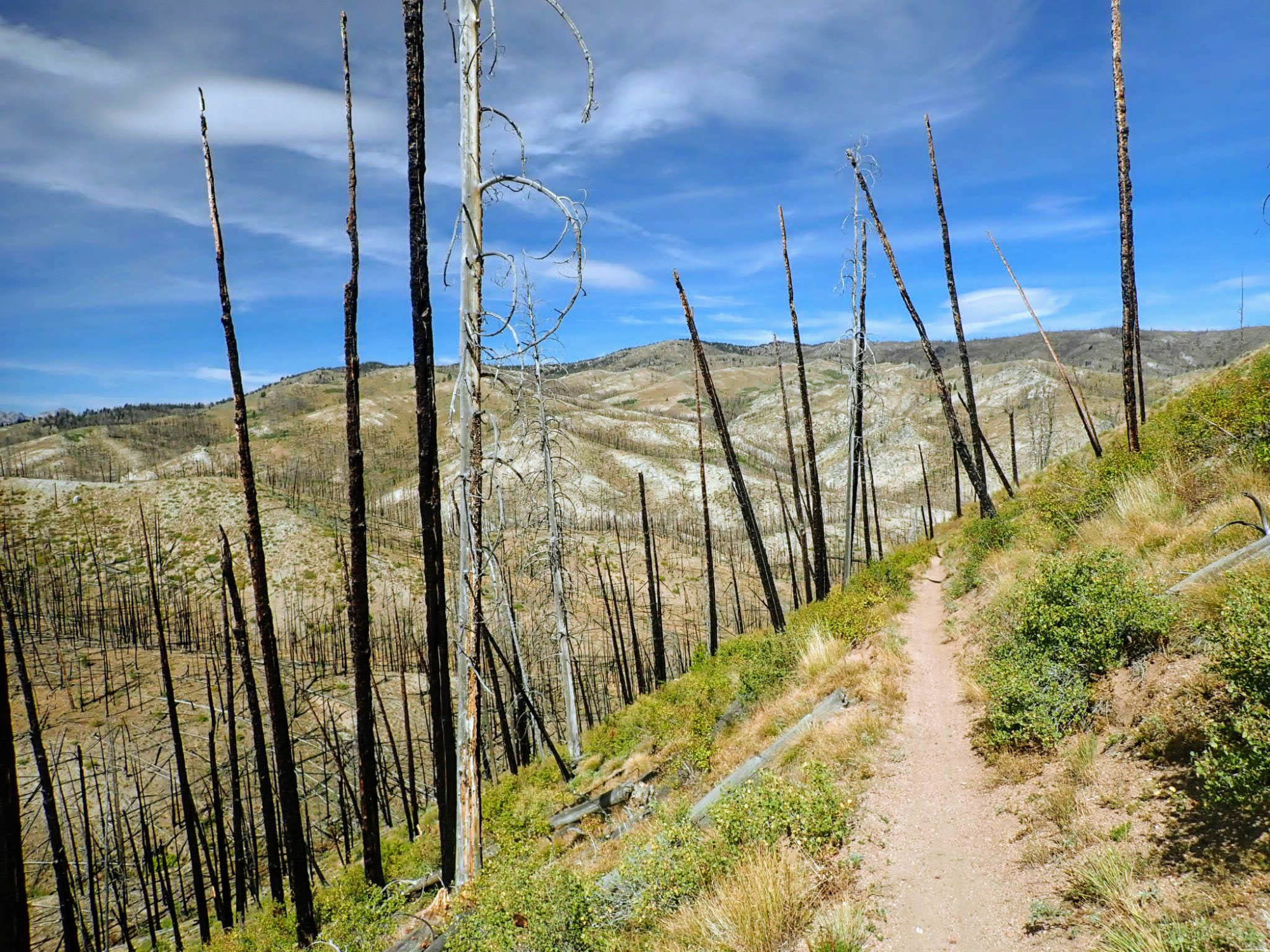
Bikepacking is a reminder that nature is in charge.
When touring, I divided my days by uphill and downhill, and maybe pavement versus gravel. In specific areas, such as Patagonia and Nebraska, I cared a lot about wind. Barring a mechanical issue or a wickedly steep hill, moving at walking pace was unexpected and most days went as planned.
Not so when bikepacking. Roads that should have been smooth dirt turned to impassable mud. Where I planned for blissfully downhill I found loose, rocky slopes. Uphills where I expected some hike-a-bike were so steep that I could barely make forward progress at all.
Then there was the unexpected snowfall in early September. While trying to outrun it I rode straight toward an ominous plume of smoke, expecting a very long reroute until the fire crews let me ride through their burn when the wind was right. And then, freezing temperatures and biting wind and nowhere to hide for dozens of miles. All of that in only three days!
Weather and terrain influence a pavement-focused tour too, and traveling by bicycle in unfamiliar cultures breeds its own kind of chaos. But bikepacking, with its more committing routes and exposure to the elements, reminded me that nature is in charge. Bikepacking challenged my illusion of control and reminded me that in bicycle travel, as in life, it’s wise to expect the unexpected.
The bike doesn’t matter, except when it does.
I nod in vigorous agreement when people say “the best bike is the one you already have.” I admit to a perverse satisfaction in pushing the limits of my trusty Long Haul Trucker when everyone else shows up with a mountain bike. I absolutely believe anyone with interest should try bicycle travel on whatever bike they can get their hands on.
But I walked my Long Haul Trucker through more sections of rocky Idaho singletrack than I care to admit. I struggled with bar-end shifters on rough terrain. I pushed the limits of my strength trying to heave the heavy steel beast—which weighs half as much as me even with my most minimal load—up steep and slippery hike-a-bikes.
There’s no doubt that bikepacking, especially on technical trails, benefits from a specialized bike more so than standard touring. My touring bike is reliable, stable, and with the right tires she can eat gravel roads for breakfast. But the lure of wilder trails has me dreaming of something a little more rugged.
Bikepacking requires actual bike handling skills.
I certainly fought my way through stretches of bad gravel from time to time while touring, getting better with practice. But rocky singletrack in Idaho and rutted dirt in Oregon required real mountain biking skills, which I don’t currently possess, especially on a loaded bike. Clearly, it’s time to start practicing.
Though I’ll always appreciate the smooth rhythm of a zoned-out pavement spin, I like how the technical variety of trail keeps my brain occupied during long days in the saddle. I’ve always been into endurance, but now bikepacking requires that I develop more specific athletic skills. Challenge accepted.
Bikepacking can be a solitary, internal pursuit.
My first impression of bikepacking involved seeing no other humans for nearly 24 hours, something I had never before experienced on a bike. For me, this is neither a pro nor a con. Intensely introverted, I soak up solitude like a dry sponge. I usually ride solo and like it that way. But I also find cultural variety fascinating, and rely on extroverted strangers to pull me out of my shell and create memorable moments when I travel.
Of course it’s possible to bikepack in populated areas or tour in empty areas, but rougher roads and trails definitely tip the balance toward solitude, at least in the US. It’s nice to have the choice.

Bikepacking means intimately experiencing the land.
During Smoke ‘n’ Fire I had the interesting experience of popping out from a dirt track onto a paved highway I’d previously ridden while touring. When I’d first ridden that highway it felt dramatic and wild as it snaked up the valley, my first taste of Idaho.
But now, after days of riding, walking, and stumbling up and over the mountains on dirt and gravel, that highway seemed like it missed the point. I felt a new sense of connection with the land, its rutted dirt and freezing nights, and all its different types of rocks. I felt like I truly knew it, instead of just passing through on the path of least resistance.
Bikepacking feels safer.
As a woman riding solo, the concept of fear is never far away. If I ever manage to forget that I’m supposed to be afraid, some well-meaning stranger kindly reminds me: “You’re all alone? Aren’t you afraid? Be careful out there!”
I tell them that riding in traffic is the most dangerous part of bicycle touring, and this risk doesn’t discriminate based on gender. For this reason alone, bikepacking on trails and lightly used roads increases my odds of a trouble-free ride.
But there’s more to it, unfortunately. I personally believe most people are good and bike travel is fairly safe, even for solo women. But that doesn’t mean I’m immune to the pounding surge of adrenaline when I imagine footsteps outside my tent at night, or a car lingers too long on a lonely road. Our culture teaches me to believe I’m vulnerable, and to some extent, I am.
When I bike tour in populated areas my threat sensors are always working, evaluating, trying to read people. This part of my brain can rest in the solitude of the backcountry. Instead, I’m free to focus on risks I can mostly control: monitoring my water supply, staying warm and dry in the cold, riding carefully on sketchy terrain. It’s peaceful, and a big relief.
My favorite aspects of bicycle travel didn’t change.
Whether we move quickly or slowly, pack panniers or a seat bag, or roll on pavement or dirt, trips taken by bike will always have some things in common.
Bicycle travel will always be total immersion, whether in a perplexing culture or a raging storm. It will always include the curiosity and kindness of strangers, whether by the hundreds or one every few days, their dreams and fears revealed in their reactions to a visitor passing through. Bicycle travel will always be simplicity: the privilege of stripping life down to essentials of sustenance, shelter, and getting from A to B.
And finally, to me, bicycle travel will always feel like freedom: freedom to move through the world on my own terms, to follow my intuition and curiosity, to linger or to move on.
So, what’s the result of my bikepacking experiment? Am I converted? As you can probably tell, I’m a fan. I’m not ready to toss my panniers just yet; they may still come in handy for certain rides on my wishlist. But bikepacking is a very welcome addition to my pedal-powered repertoire. With this new set of skills to develop and routes to explore, my two-wheeled world feels a lot bigger and wilder.
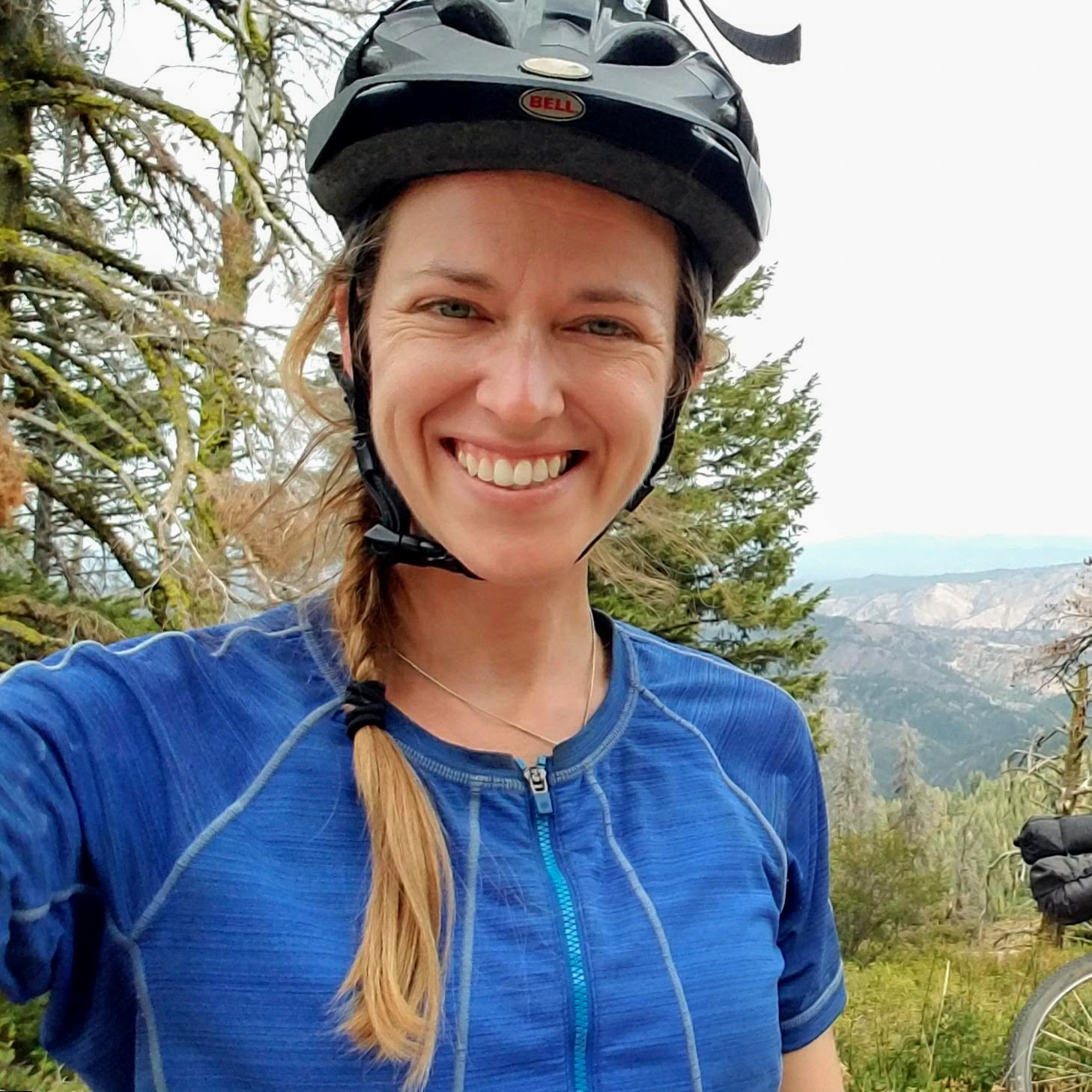
About Alissa Bell
Alissa Bell was originally obsessed with ultrarunning and backpacking before she discovered bicycle travel in 2018. Things escalated quickly, leading to long trips in Asia, South America, the US, and soon Africa. When not on the road or trail you can find her home with her husband in California, where they mostly build software and play outside. Find out what she’s learned from years of bike travel, outdoor adventure, and unusual travel destinations on her website, Exploring Wild.
Please keep the conversation civil, constructive, and inclusive, or your comment will be removed.













